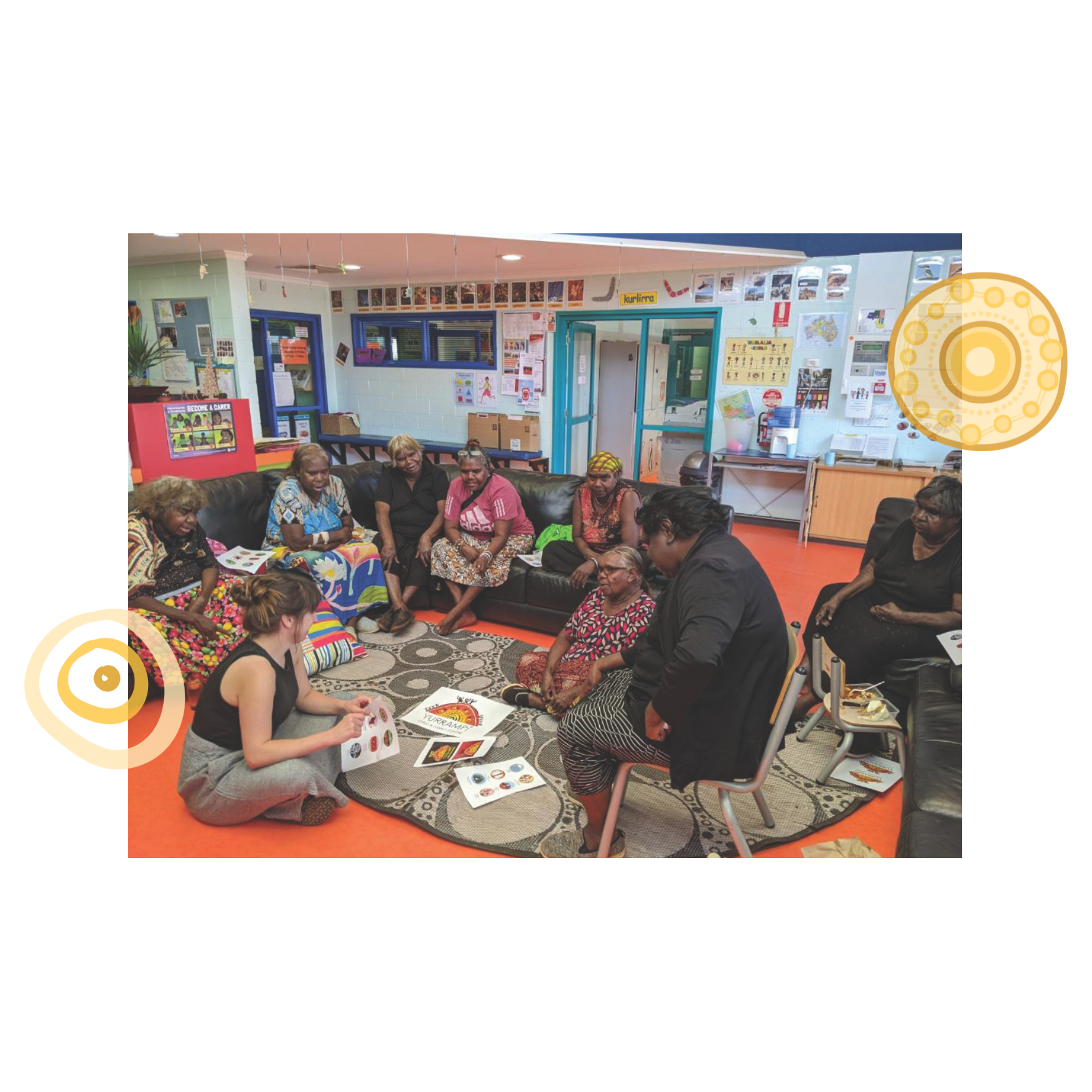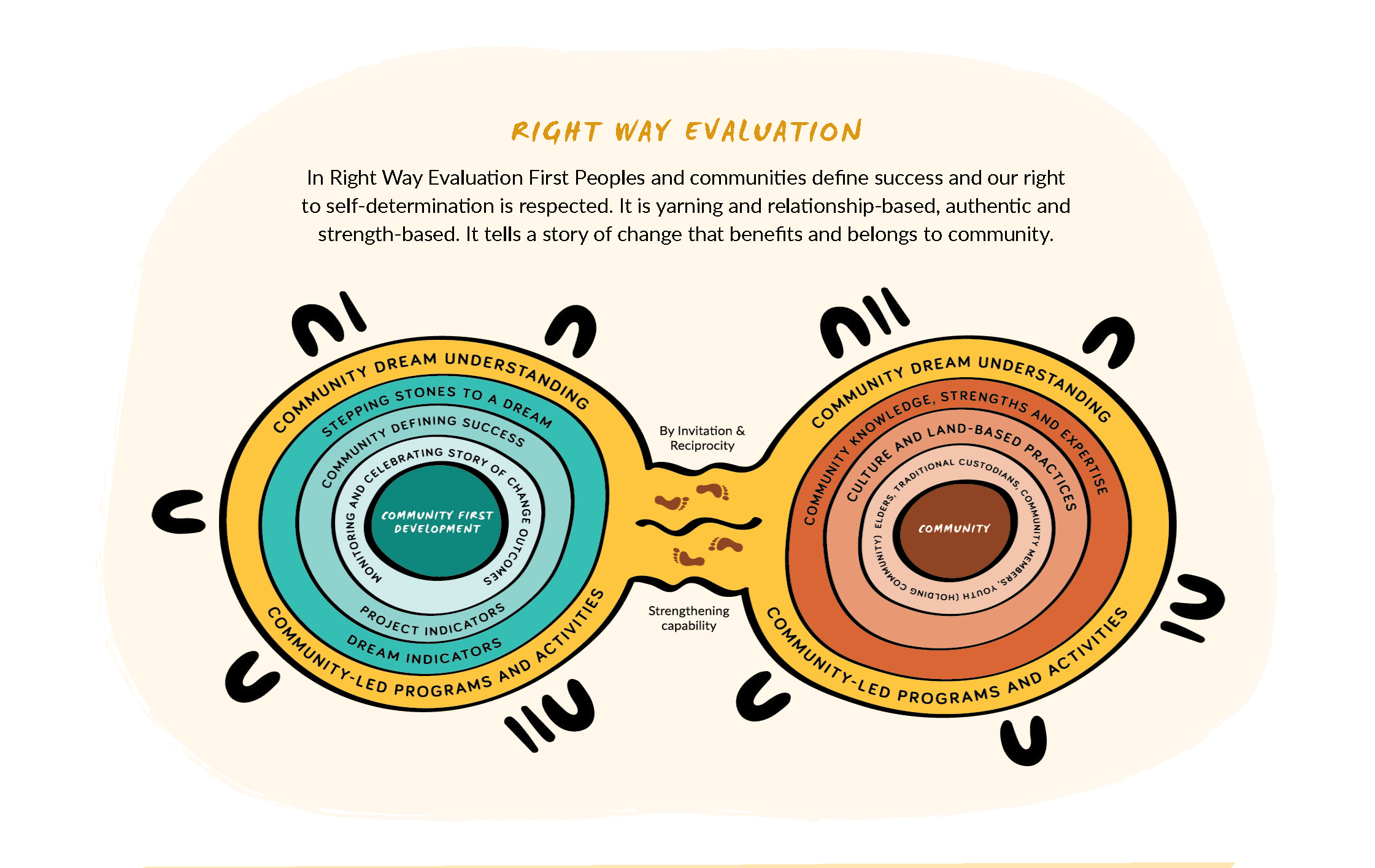We’re launching a new guide: Right Way Evaluation
We’re launching a guide that shares how we evaluate projects with communities – the right way!
What is evaluation?
Evaluation is a process used to understand how well a project or program is working. When done well in First Nations’ communities, it can be a powerful tool for change, truth-telling, and healing, especially when it's carried out with respect and in partnership with community.
What is Right Way Evaluation?
In Right Way Evaluation First Peoples and communities define success, and our right to self-determination is respected. It is yarning and relationship-based, authentic and strength-based.
The Right Way Evaluation approach is:
Yarning based.
Grounded in storytelling.
Relational.
Right Way Evaluation shares the community’s own story of growth, strength and change, told by the people living it, not interpreted by others.
Why are we talking about this?
Our new guide shares how we evaluate projects with communities. This isn’t a separate or external process. It’s woven into our Community Development Framework and embedded in our partnerships, from the first conversation through to project completion and beyond.
We’ve learned that how evaluation is done matters just as much as what it measures.
What’s the problem with mainstream evaluation?
When it comes to mainstream evaluation, it doesn’t reflect First Nations’ values or ways of being and knowing. They often miss what is most important. Too often it:
Misses cultural and historical context
Focuses on problems not strengths
Extracts data without returning it back to the community.
This kind of evaluation doesn’t serve our people. It overlooks the lived experiences of First Nations’ people and fails to deliver the outcomes we need.
At the same time, we recognise the value of staying aware of mainstream evaluation methods. Some tools can be adapted to better reflect and support First Nations’ ways of working.
What does Right Way Evaluation look like?
In Right Way Evaluation, First Peoples and communities define what success means, and their right to self-determination is honoured. It is built on yarning, strong relationships, authenticity, and focuses on strengths.
This looks like:
Community-led from day one: Communities define what success looks like, what project indicators matter, and how information is gathered and shared.
Culturally respectful: It honours local knowledge, storytelling traditions, and ways of working.
Data owned and controlled by mob: Communities own their data. Full stop. They decide who sees it, how it’s used, and where it goes.
A shift from deficit to strengths: Instead of focusing on what’s “wrong” in the community, the evaluation focuses on resilience, leadership, culture, and connection.
Genuine relationships: Evaluators create genuine relationships with community, and do not just collect data and leave.
Our team came together to explore what evaluation means in First Nations’ communities. Together, they designed the graphic below to visually represent Right Way Evaluation.
The graphic shows how community and Community First Development walk the journey together. It starts with Community First Development being invited to work alongside the community, to support them to achieve their dreams. The community’s dream is held by Elders, community members, and young people. And it’s supported by community strengths, like knowledge, culture, land-based practices, and lived experience.
The journey with Community First Development starts by listening and understanding their dream. Together, we identify the steps (or "dream indicators") that help bring that dream to life through community-led projects and activities.
Communities define what success looks like. We track progress, reflect, celebrate achievements, and work through any challenges along the way.
Through these stages, we are contributing to the community’s growth and story of change.
Truth-telling and healing
Evaluation is also a chance for truth-telling. From the start, communities share honest stories about their needs, lived experiences, and the impact of colonisation. These stories may speak to intergenerational trauma, systemic barriers, and the importance of culture and connection.
For many First Nations’ people, evaluation is a chance to “tell it like it is”, how colonisation and past policies have affected their lives, and how they plan to move forward to strengthen community.
Truth-telling through evaluation creates space for healing and change.
Honouring our ways
The guide upholds our ways – the ways that have always existed within our communities.
First Nations’ communities have always had their own ways of making decisions. These processes are often oral, relational, and guided by values like respect, reciprocity, and a collective responsibility within a family or community. Right Way Evaluation honours and supports these traditions.
It’s time to rethink how we monitor and evaluate projects with First Nations’ communities.
Let’s lift the bar on evaluation with First Nations’ peoples.
Know someone designing programs or evaluations? Share this with them. And remember to download your copy of the guide.


